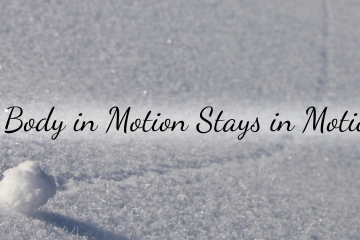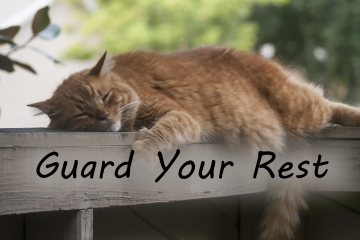I started to experience pain in my right shoulder towards the end of last year. At first it was just a small ache off and on but the ache began to grow into a throbbing pain and the off and on quickly turned into all the time. I visited a doctor, got an x-ray of my shoulder, and went to physical therapy. The good news was that nothing was really wrong with my shoulder. The bad news was that it still really hurt.
The physical therapist determined that it was due to the position my arm was in all day using the mouse at my desk for work. That combined with a lack of regular movement and stretching had resulted in a very painful shoulder. The fix? Moving and stretching regularly and building up the muscles in and around my shoulder. So I started going to PT once or twice a week and doing the stretches and exercises at home.
Fast forward 2 months and my shoulder was pain free again! Aaand I stopped going to PT, stopped stretching regularly, and quit doing the exercises. My shoulder was fine for another month or so and then it began to twinge again. The twinge was ignored until it started hurting a little more and then I got back into stretching it regularly.
The moral of the story? Good habits are important, and they are both easiest and hardest to maintain when everything is going well. However, this is also the most important time to stay consistent.
A simple good habit like stretching and moving regularly can be the difference between constant pain and being pain-free. Maintaining simple good habits might seem like “duh”, but it’s a lot harder to do than we think. Especially when we’re currently healthy and happy.
When we’re currently in a good state, we know that we should keep doing that good habit, but we also don’t really notice an immediate difference if we stop doing that good habit. This makes it easy to put it off and put it off and put it off until you just stop doing it altogether. Conversely, when we’re in a bad state, we are constantly reminded and encouraged to do the good habit because of the bad state. For me, that bad state was my shoulder being in pain. When I wasn’t in pain, there was no immediate incentive to keep stretching. When I was in pain, my pain acted like the stick and constantly reminded me to stretch so my shoulder would stop hurting.
The best time to maintain a good habit is when we’re in a good state so that we can avoid the bad state altogether. Sometimes the bad state is some discomfort, sometimes it’s extreme pain. Sometimes the bad state is reversible and sometimes it’s not. It’s important we do our best to stay in a good state in case the bad state ends up being irreversible or much more damaging than we think. (Even if the bad state isn’t completely terrible, if given the choice everyone would still prefer to be happy and healthy.)
Maintaining a good habit when you’re in a good state is also the easiest time to maintain it because you’re not in a lot of pain or struggling with this health issue or that misc issue. It’s a lot harder to maintain a good habit when you don’t want to move because everything hurts. Don’t wait for the stick!
Remember, each time we choose to do a good habit, we are choosing to be happy and healthy. Each time we choose not to do a good habit (inaction is still a choice), we are choosing to not be happy and healthy. Those choices are so small and commonplace that we often don’t even realize their building effects until we get into a really good state or a really bad state. Our little choices are like a snowball rolling downhill, slowly building up bigger and bigger until the tiny snowball is big enough to knock you over.
I’m currently reading Atomic Habits and one of the important components to building a habit is to make it satisfying. So, my tip (from Atomic Habits) is to add some kind of immediate reward to the end of each task that makes up your good habit so that you are more motivated to do it and don’t end up waiting for the stick to come out. For example, I’m building the habit of walking twice a day. My reward for walking on my treadmill is to watch hard enduro while I walk. Now, I look forward to walking on my treadmill. Plus, I feel great afterward!
What simple good habit will you work on?
TLDR: When you’re healthy and happy it’s easy to slack off but that’s when it’s most important to keep going.



0 Comments